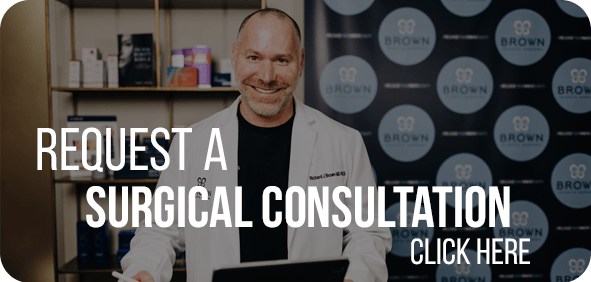MASSIVE WEIGHT LOSS SURGERY
PROCEDURE OVERVIEW
Procedure – Massive weight loss, while providing significant benefits to your health, can often leave you with extra sagging, loose skin all over your body. As one loses weight, usually subcutaneous fat decreases and the fat cells become smaller. But for many patients, this occurs so rapidly that the overlying skin cannot contract at the same pace. The result is extra skin where fat once existed. Most women, and some men lose significant volume in the breasts, leaving them deflated and ptotic (saggy).
Plastic surgery can remove the pounds of hanging skin and give you improved contour and shape. While many of the scars can be placed in fairly inconspicuous areas, such as the panty line, there are scars resulting from this surgery that will be visible. The degree of scarring is unpredictable, as scarring is determined by your genetics. However, patients generally believe that trading skin for scars is worth it.
BEFORE MASSIVE WEIGHT LOSS SURGERY
Preparing for surgery – Tell Dr. Brown about any medical problems you have, and any problems you may have had with surgery in the past. Most importantly, tell your doctor if you have had any hernias or any abdominal surgery in the past. You will be told which medications to stop and which to take before surgery. If you smoke, you will be asked to quit for a minimum of 4 weeks prior to surgery as well as 4 weeks after surgery. If you get sick or have any health issues in the days before surgery, please notify the office at once in case we have to postpone your operation.
AFTER MASSIVE WEIGHT LOSS SURGERY
What kind of swelling and bruising can I expect? – You will have drains beneath the skin in the regions where the abdominal skin was elevated from the underlying muscles. Most patients do not need drains for the breast portion of the procedure. Drains are commonly removed 1-2 weeks after surgery. Swelling and bruising are normal signs of the healing process. They occur after any surgery to varying degrees. Swelling peaks at about 48 hours, and then rapidly decreases. By the end of the first few weeks, 50 percent of the swelling is gone. By 6-8 weeks, a majority of the swelling has diminished. By six months, almost all the swelling is gone. Any remaining swelling is almost not perceptible.
What restrictions are there? – You can shower two days after surgery, but you should not take a bath, use a hot-tub, or go swimming for at least two weeks. The first day after surgery is usually spent lying in bed or sitting in a chair. Most patients then begin walking around the house. By the end of the first week, you will probably be ready to leave the house for short trips and light walks. More vigorous walking and mild stretching exercises can be resumed about two weeks after surgery. Strenuous activities should not be done until 6 weeks after surgery. Also, you shouldn’t do any heavy lifting (over 10 pounds) during these 6 weeks.
When can I travel? – Traveling after surgery (air travel, long distance car trips, train rides, etc) should not be done before you have had your first postoperative visit. Typically, this occurs 5-7 days after surgery for suture removal. Patients who are at high risk for developing a blood clot should not travel until instructed by their surgeon. Short car trips under 60 minutes can be done before the first visit. A good rule of thumb is when you are off the stronger pain medication and can get up without assistance you are ready to go for a short drive. You should not drive the car yourself, until Dr. Brown gives you clearance for this.
What if I have a problem? – When should I call the office? We always welcome calls from patients. If you have any concerns at any time, please feel free to contact our office. If it is an emergency, the answering service is available 24 hours a day, including weekends and holidays.

PATIENT TESTIMONIALS
"Hi, my name is Diana. I am a patient of Dr. Richard J. Brown. I started my breast reconstruction on March 23, 2012 after having a double mastectomy in May of 2012. Dr. Brown has done an amazing job, my progress is great and my breasts are beautiful once again. Dr. Brown is very compassionate and professional. Thank you Dr. Brown for giving me back what cancer took away from me."*.
- Diana R.
*Individual results may vary*
"My experience with Dr. Brown and his staff has been nothing less than exceptional! It's been a long road. I just completed breast reconstruction/augmentation and removal of excess skin/fat from my upper arms following a 100+ pound weight loss. Very pleased with the early results! Not just highly recommended, but the highest recommendation ever!!!"*
-Lisa W
*Individual results may vary*



